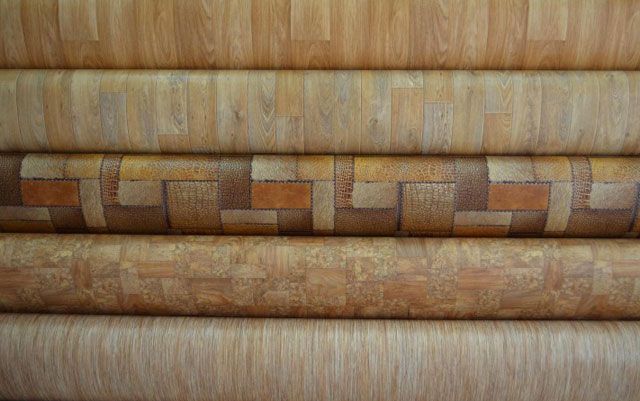Types of linoleum
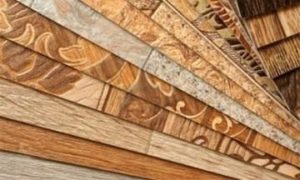 Despite the wide range of flooring options, linoleum remains one of the most popular options. This is explained quite simply. It is very wear-resistant, easy to install, has the optimal combination of quality and cost, is easy to clean, environmentally friendly, and also has a large selection of different colors, patterns and textures. Sometimes a large selection of flooring confuses buyers, because it is made from different materials, used in various fields, and differs in its structure.
Despite the wide range of flooring options, linoleum remains one of the most popular options. This is explained quite simply. It is very wear-resistant, easy to install, has the optimal combination of quality and cost, is easy to clean, environmentally friendly, and also has a large selection of different colors, patterns and textures. Sometimes a large selection of flooring confuses buyers, because it is made from different materials, used in various fields, and differs in its structure.
The content of the article
Types of linoleum depending on the material of manufacture with photos
Several types of materials are used in the manufacture of the coating: natural components, rubber, polyvinyl chloride, nitrocellulose, glyphthalic resins.
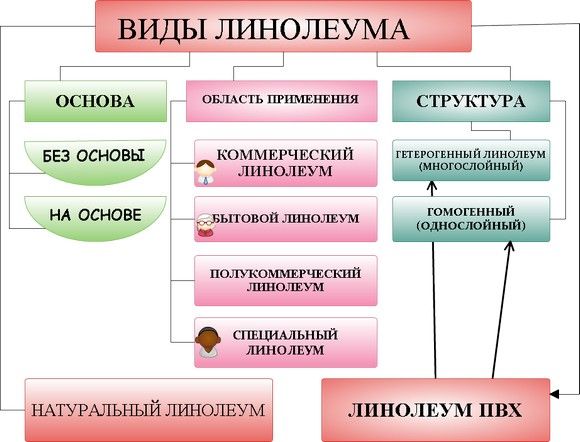
Natural
Due to the fact that completely natural ingredients are used in production, it is one of the best. It contains wood resin, linseed oil and cork meal. This type of linoleum is absolutely hypoallergenic and environmentally friendly. It is highly resistant to mechanical damage and fire resistance and lasts for quite a long time, as it does not lose its brightness of color and shape. It will be an ideal option for the kitchen, as it has a grease-repellent surface that is resistant to many substances.The linseed oil included in the composition gives it good bactericidal properties.
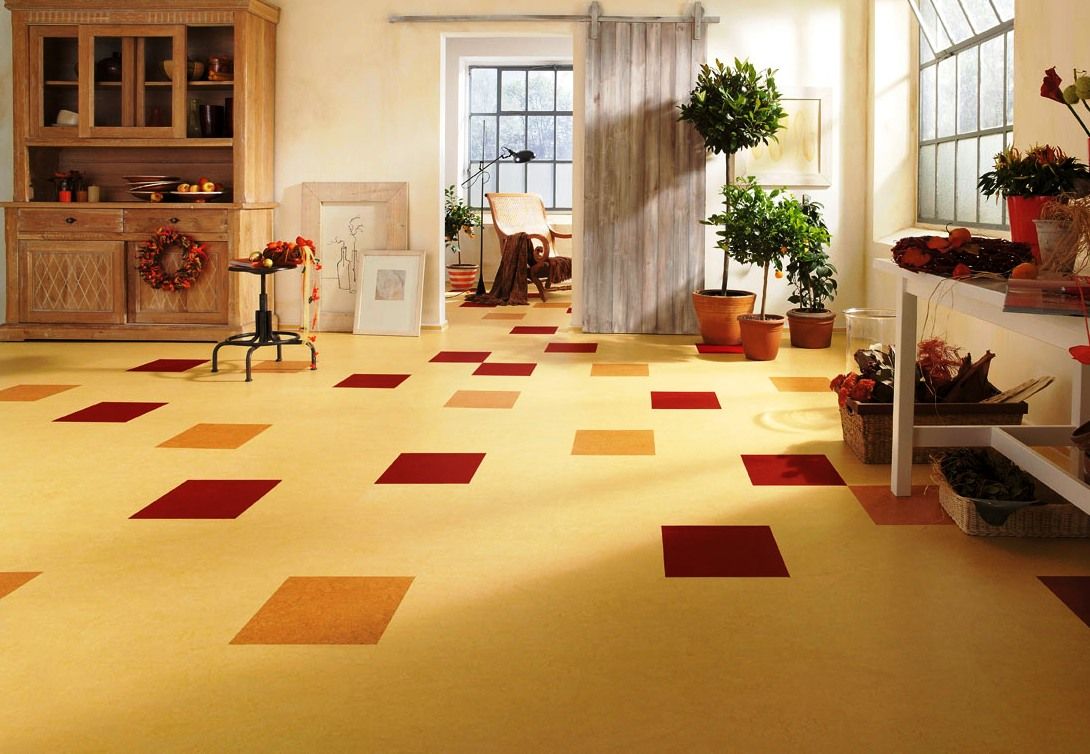
ATTENTION! Linoleum made from natural materials has a significant drawback. This option does not have plasticity, which causes inconvenience during its transportation and installation.
Rubber
To make this type, crushed rubber and sometimes bitumen are used. The top layer is made of rubber, to which a coloring pigment is added. This option is characterized by high plasticity and moisture resistance.
Polyvinyl chloride
PVC products are the most popular among linoleums. Its popularity is explained by its low cost, large selection of patterns and colors, good flexibility and easy installation. This option is available on different bases. For all its advantages, it has some disadvantages: a pungent odor that takes a long time to dissipate and poor frost resistance. At low temperatures, this option may crack.
Glypthal
It is a competitor to PVC products. However, it is inferior to them in strength and elasticity. Also, over time, it stretches in length and shrinks in width. Well suited for noisy rooms as it has excellent soundproofing properties.
Nitrocellulose
The material gives the product excellent flexibility and moisture resistance. Has a bright shine. However, it is very fire hazardous.
Classification of linoleum by scope and wear resistance
Before purchasing a floor covering, in addition to choosing its color and pattern, you must take into account its physical parameters. Materials have several classes of use. The classification is based on the wear resistance of the product and the area in which it will be used.There are three types of linoleum:
- For household use.
- For commercial purposes.
- Semi-commercial.
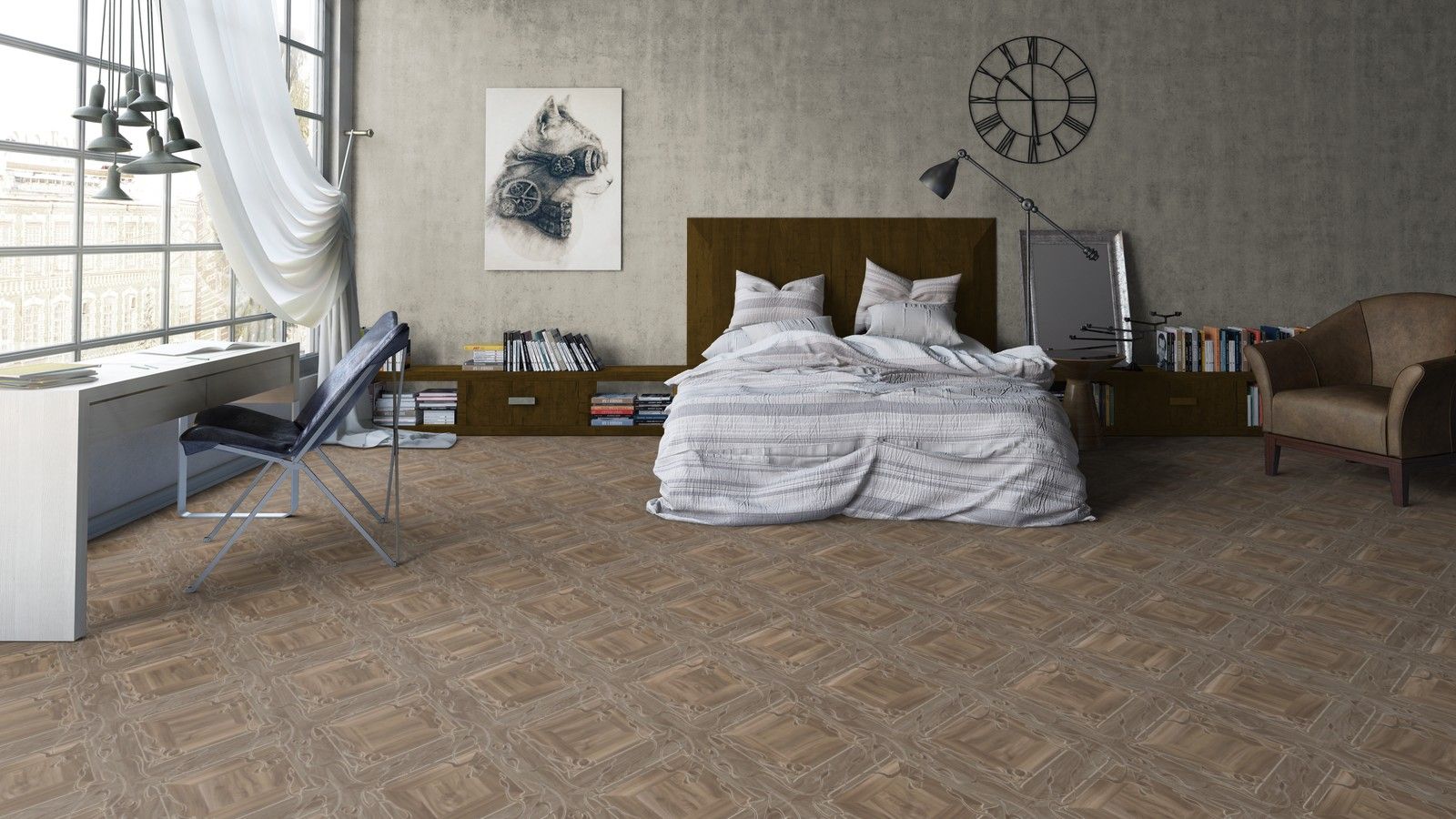
Domestic
The thickness of this option is about 4 mm, has a multi-layer structure and a foam base. Main characteristics:
- Good sound insulation.
- Highly environmentally friendly.
- A variety of decorative patterns and colors.
- Low price.
REFERENCE! The wear resistance of this option is low, so it is only suitable for use in residential areas.
Commercial
Manufacturers provide a long warranty for such products, since this option is highly resistant to damage. Products of this type are homogeneous and heterogeneous. The first option is single-layer, but quite durable. Wear resistance is achieved due to the dense structure. The heterogeneous coating is multilayer. Additional layers provide strength and stabilization. Commercial linoleum can also be used for domestic needs, but it has a high cost.
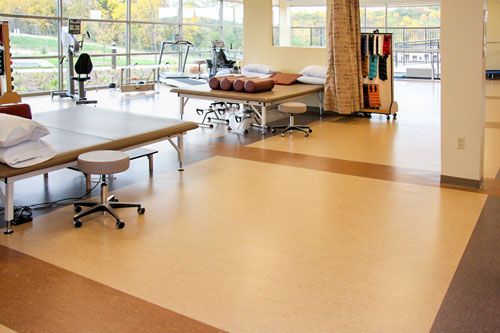
Semi-commercial
It can be called the golden mean between household and commercial options. The main characteristics are:
- good resistance to mechanical damage, scuffing and cracking;
- convenience and ease of installation;
- versatility in use - suitable for use in both home and commercial premises with medium traffic.
Types of linoleum structure
This type differs not only in its scope and materials of manufacture, but also in its structure. According to its internal structure, it can be homogeneous or heterogeneous.
Homogeneous products
Single layer type of coating.In its production, polyvinyl chloride and coloring pigments are used. Thanks to its homogeneous structure, it is the most durable among all types of linoleum. Ideal for commercial use.
Heterogeneous products
Has several layers:
- decorative, on which a protective agent is applied;
- a layer of fiberglass that gives additional durability;
- base layer made of PVC or fabric.
Suitable for use in home and commercial areas with medium traffic.
Advantages of linoleum
Linoleum is deservedly the most popular flooring. This is explained by its advantages:
- Very easy installation. One of the main advantages. Installation of the product does not require special knowledge and can be easily done independently.
- Does not require special care. On the surface of linoleum, traces of contamination are almost invisible.
- Moisture resistant.
- Has excellent flexibility and low slip. This allows it to be used in medical institutions, sports facilities and other public places.
- It has good noise and thermal insulation.
- A large selection of patterns and colors makes it easy to choose the desired option.
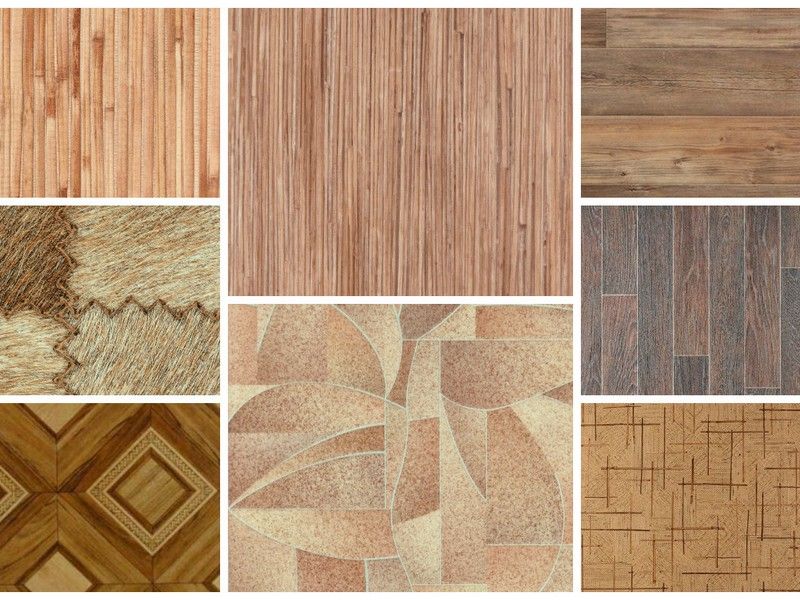
Linoleum, made using modern technologies, is one of the best flooring options. The variety of designs makes it easy to choose the right option for any room design.





